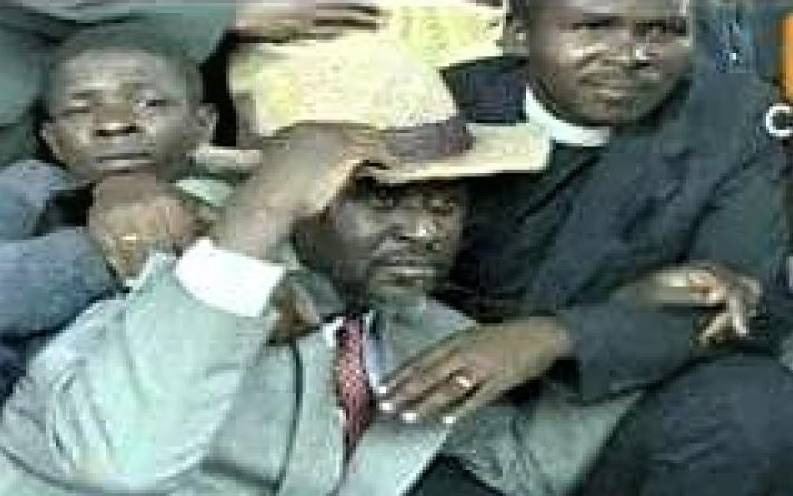×
The Standard e-Paper
Join Thousands of Readers

A picture of Raila as he was being rescued from a police officer who was firing bullets at him in Thika. Shielding him were an evangelist Rev Okoth Otura and one of his bodyguards- Martin Otieno alias Oti. [File, Standard]
A police officer cocked his AK47 rifle, aimed and was about to pull the trigger when a hawk-eyed cleric saw him. The venue was Thika Stadium and the target was Raila Odinga.